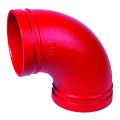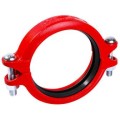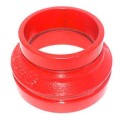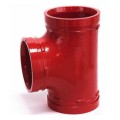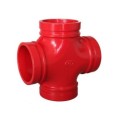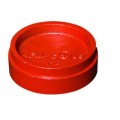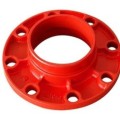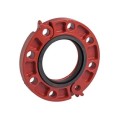Grooved Fittings
Grooved fittings are used in systems that have grooved couplings and are designed to join metal pipes (or other materials) together. This type of fitting uses a "grooved" joint along its surface that provides a mechanical connection between the two components. Grooved fittings can provide quick and easy installation, strong flexibility, and improved safety compared to traditional threaded or flanged connections. The grooved fitting is made up of two main components: the body and the gasket.
Body
The body of the fitting is the main structural component that provides the mechanical support for the joint. It is typically made from a cast or extruded metal, and contains grooved surfaces along its circumference. These are then fitted with unique fittings that allow for the connection of pipes and other components. The body also includes a set of sealing rings that can help to provide a sealed and leak-free connection.
Gasket
The gasket is another crucial component to the grooved fittings. It is used to provide a seal between the body and the pipes. Gaskets are typically made of neoprene or rubber, and are designed to be flexible and durable. They can be designed to provide a single-piece seal or a two-piece joint seal. The gasket also provides additional benefits such as vibration dampening and noise absorption.
Advantages
The main advantage of using grooved fittings is the speed and ease of installation. Because the components are pre-fabricated, they can be installed quickly without having to use special equipment or specialized tools. This eliminates a lot of the labor that is typically required for traditional fitting methods. Additionally, grooved fittings are also very flexible, allowing a wide variety of joint setups to be created.
Grooved fittings can also improve safety due to their improved design. These fittings are designed to release pressure in the event of an emergency, reducing the chance of explosions or damage to the system. This makes them ideal for use in many industrial and commercial settings, making them a popular choice for use in a variety of applications.
Disadvantages
The primary downside of grooved fittings is their increased cost. The components, the fittings, and the gaskets can all be costly compared to traditional methods. Additionally, they require additional maintenance to keep them performing at their best. Without consistent checks and maintenance, these fittings can become less reliable and potentially dangerous. They also require specialized labor and tools in order to be properly installed.
Conclusion
Grooved fittings are an excellent solution for providing a secure connection between metal pipes and components. While they offer some great advantages, it is important to remember that they also come with some inherent disadvantages. With careful maintenance, however, these fittings can provide a superior connection option that is reliable and cost-effective.
Grooved Fittings FAQs
Grooved Fittings FAQs
What are grooved fittings?
Grooved fittings are mechanical pipe connectors that use a groove in the pipe end to secure the fitting. They are commonly used in plumbing, HVAC, and fire protection systems.
What materials are grooved fittings made of?
Grooved fittings can be made of various materials such as duct












































